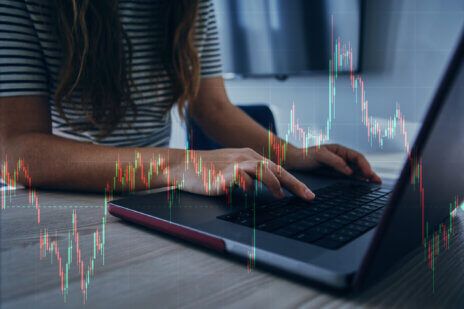
ESG investing is a nuanced process that requires a keen eye for materiality and the ability to sift through data to separate “noise” from legitimate insights.
There’s growing consensus among investors that allocations should take into account environmental, social, and governance (ESG) factors. However, there’s far less consensus around exactly what factors fall under the ESG umbrella—and the best way to measure them. For example, one ESG investor might prioritize risk-return management, while another emphasizes thematic funds, and others want to invest according to their values or to make a tangible impact.
It’s a convoluted scene, but there is a solution. ESG investors can adopt active management approaches to accommodate their individual objectives and challenges. As a result, the fundamentals of portfolio construction—such as valuation, liquidity, time horizon, and suitability—aren’t ignored. At Thornburg, we view ESG as a vital element of our essential expertise.
Our unique approach to ESG is based on the following:
Sifting Through the Noise to Locate Materiality
In terms of understanding an investment’s risk and return profile, academic research shows it’s far more beneficial to focus on fewer, more meaningful (i.e., material) factors than attempt to master every possible angle (See table below).[1] As such, we use the principles of the Sustainability Accounting Standards Board (SASB) to guide our initial evaluation of materiality.[2]
Performance of Material and Immaterial Sustainability Issues
| Stock Returns (annualized alpha) by Type of Sustainability Performance | ||||
| Performance on Material Factors |
High
|
6.01% | 1.96% | |
|
Low
|
-2.90% | 0.60% | ||
| Low | High | |||
| Performance on Immaterial Factors | ||||
Source: Harvard Business Review, March 2015
ESG data and disclosures have evolved significantly in recent years. That said, parsing such data still requires capable minds to not only separate signal from noise but also recognize all the ways its conclusions may mislead investors.[3] Moreover, the lack of correlation among data providers may offer insight into diverse approaches, but it can also lead inexperienced asset managers to build portfolios that rely too heavily on a particular data vendor’s point of view.
In other words, ESG can be meaningful—but only if there’s a collaboration between sophisticated clients and capable managers who both understand the inherent complexities, challenges, and especially tradeoffs of the due diligence process.
Leveraging the Strengths of Active Management to Make Difficult Decisions
Historically, passive approaches to ESG have relied heavily on exclusions based on a moral (rather than return-focused) stance. This blunt approach works better on some trades than others. For example, the decline of coal power is arguably a less complex phenomenon than a bet on the decline of a fossil fuel like natural gas.
Along the same lines, it’s also unadvisable to invest in a broader theme simply because it complies with general ESG ideals. While it’s fair to say solar power represents a key component of a future power mix, not everything about solar passes tests on environmental and social values and not all parts of the solar economy have performed well. This reinforces the value of active management. As an active manager, we can pinpoint investments within an opportunity theme as well as an appropriate part of the sector and at the right valuation.
Many ESG issues are inherently complex, which makes them a good use case for active management, as competing considerations can be uncovered and balanced. For example, society is growing increasingly concerned about pollution from plastics in terms of its effects on the environment and biodiversity (particularly in oceans), as well as the accumulation of microplastics in human tissue and its health consequences.
However, eliminating plastic producers from a portfolio is an insufficient solution because those producers create both the disposable items that cause the problems as well as those that are highly recyclable and reduce the overall draw of natural resources into packaging. A skilled active manager can rectify the situation by studying how plastic producers currently manage (and plan to resolve) this predicament. Consequently, active ownership enables investors to confidently satisfy the E and S considerations of ESG.
Clean energy isn’t the only use case, though. Diversity, Equity, and Inclusion (DE&I) topics have also become points of emphasis for many investors. However, bringing accountability to companies on these matters is another delicate balance. One must consider catalysts like privacy, disclosure regulations, and the geographic disposition of workforces — which, in and of itself, introduces unique considerations. We recently led a conversation on this topic as part of a UN PRI Roundtable, and we found that stewardship in favor of better disclosure is universally agreed upon.[4] That said, the evaluation of a company’s DE&I program requires an appreciation of nuance and the respect to get this right—requirements that don’t lend themselves to the handy numerical grades favored by the rigid approach required of passive investors.
Laying the Foundation for Meaningful Engagement
As constructive shareholders, active managers can now have more meaningful engagement with the companies in which we invest. At Thornburg, we have intentionally placed ESG experts throughout our investment team and staffed our ESG Committee solely with investment professionals. This empowers us to avoid the industry pitfall of making nebulous promises around ESG as it evolves from a formulaic prohibition of ownership to a real strategic factor within our investment selection process. In turn, we can make actionable decisions that contribute to the success of our clients’ portfolios.
It is our hope that just as an issuer respects shareholders who understand the challenges of sustainability, so, too, will clients respect and gravitate toward managers that put process above gimmicks.
[1] Khan, Mozaffar N., George Serafeim, and Aaron Yoon. “Corporate Sustainability: First Evidence on Materiality.” Harvard Business School Working Paper, No. 15-073, March 2015.
[2] The organization is currently undergoing a merger with the International Integrated Reporting Council (IIRC) and will be known in the future as the Value Reporting Foundation (VRF)
[3] Kotsantonis, Sakis, and George Serafeim. “Four Things No One Will Tell You About ESG Data.” Journal of Applied Corporate Finance 31, no. 2 (Spring 2019): 50–58.
[4] United Nations Principles for Responsible Investment
Discover more about:
More Insights

Thornburg Income Builder Opportunities Trust Announces Distribution

Ferrari’s Electric Future and the Evolution of Luxury Investing

FOMC Update: Fed Approves Third Consecutive Rate Cut, Projects Slower Pace

Luxury Brands Navigate China Slowdown and Tariff Pressures

Thornburg Investment Income Builder Fund – 4th Quarter Update 2025

